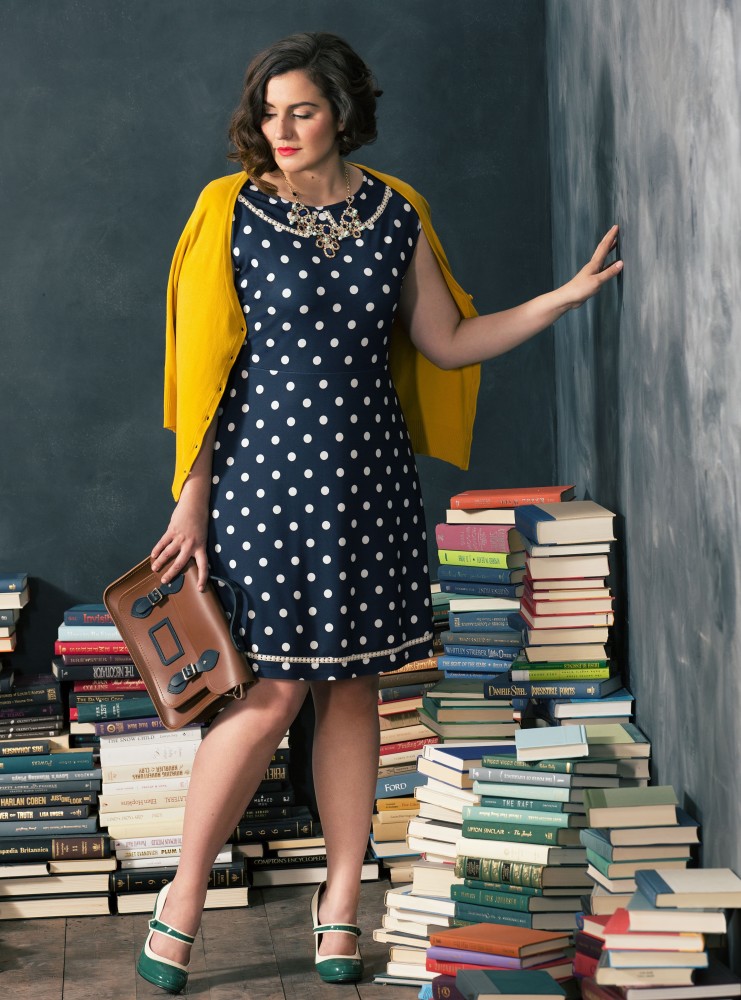By Sara Bauknecht
Pittsburgh Post-Gazette
WWR Article Summary (tl;dr) From fashion shows to photo shoots, more designers and brands are doing their part to help ensure that women of many shapes and sizes see reflections of themselves on the runway.
Pittsburgh Post-Gazette
In the wake of last month’s presidential debate, “body-shaming” has become one of the media’s favorite buzzwords.
Democratic candidate Hillary Clinton criticized her Republican opponent Donald Trump for calling Alicia Machado, the 1996 Miss Universe pageant winner, “Miss Piggy” and “an eating machine” because she had gained some weight.
Since then, around-the-clock news networks have played the soundbites on a loop and tapped dozens of commentators to opine on the topic.
Meanwhile, the fashion community has been leading its own conversations about body- and weight-shaming, in hopes of making it a thing of the past. From fashion shows to photo shoots, more designers and brands are doing their part to help ensure that women of many shapes and sizes see reflections of themselves on the runway and in ad campaigns.
At New York Fashion Week last month, 16 plus-size models walked the runway, making it the most body-positive season ever, according to the Fashion Spot’s Runway Diversity Report.
“I just wanted to have different sizes. That’s all it was,” designer Christian Siriano told NBC’s “Today” Style. He cast five full-figured models for his spring 2017 runway show. “But it’s great that it made such an impact.”
Eight transgender models and a number of models older than 50 also were featured, the report said. Retail chain J.Crew and designer Tracy Reese celebrated their customers’ individuality by inviting everyday people to take part in their fashion week presentations.
“They are friends of the brand, members of our team and all people we admire. They range in age from 13 to 70,” J.Crew creative director and president Jenna Lyons said about the models. “They’re students and parents and grandparents.
Professionals, artists, teachers and activists. Each one has their own unique style and beauty, and it has been an incredible experience to approach a fashion show from this point of view.”
Some brands also are rethinking how they cast their ad campaigns. Pittsburgh-grown e-retailer ModCloth enlisted employees, shoppers and models for its swimwear shoot this summer. Last year, it made headlines for dropping the term “plus-size” from its website, which caters to sizes XS through 4X.
In 2014, the intimates brand Aerie, a division of South Side teen clothing retailer American Eagle, launched #AerieReal, a bold move to stop retouching models and to diversify what those models look like. Earlier this year, the label named British model, columnist and National Eating Disorder Association ambassador Iskra Lawrence, who was dropped by her agency at age 15 because she was told her hips were too big, the campaign’s official “role model.” (In an interview in Seventeen last week, Lawrence criticized a photographer earlier in her career who heavily photo-shopped her images to make her appear thinner.)
“They’re encouraging people to uplift one another no matter what your size,” said Mandy Holesh, the Pittsburgh-based writer behind thecurvyblogger.com. In May, the brand flew her to New York City to take part in an #AerieReal photo shoot. “Everyone was just walking around in their lingerie hanging out and eating doughnuts and relaxing. It was amazing. I had to really embrace this.”
Holesh started her website about six years ago as a platform for voicing her frustrations with the fashion industry’s inherent bias toward women with thinner bodies. Since then, she’s watched body-positivity go from something that only a few people were blogging about to a trending topic on social media.
For Lane Bryant’s new #ThisBodyIsMadeToShine fall campaign, the longtime leader in plus-size women’s apparel gave actresses Danielle Brooks and Gabourey Sidibe and models Ashley Graham, Candice Huffine and Alessandra Garcia the chance to rebut degrading comments made about their bodies online.
“I hope I never let myself get that big,” one says. Sidibe’s response: “By big you mean amazing and beautiful and fabulous, right?”
Also for fall, the retail chain collaborated with Glamour on a special edition of the magazine called Fashion For You, which
spotlights styles for sizes 12 and up.
Despite the progress, there’s still work to be done. Although New York Fashion Week saw an increase in plus-size models, other areas of diversity, such as models of color, declined a bit this season, according to the Runway Diversity Report. Also, time will tell if some of these newcomers to the body-positivity trend are just looking to attract media attention or have a true commitment to serving more sizes.
“I really feel like the world is slowly figuring this out,” Holesh said. “It’s definitely refreshing to see.”














































































































































































































































































































































































